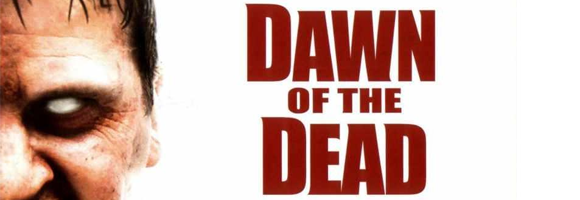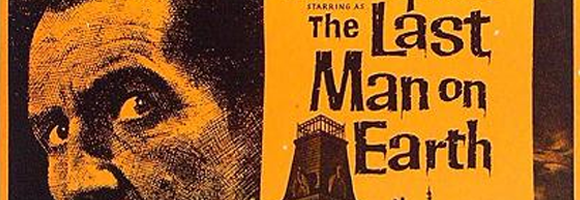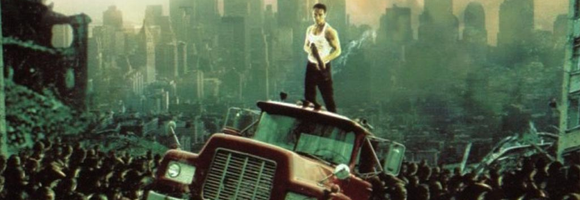omega legend
how the cyberpunk discourse infested the zombie genre

That may well be a truism, but ↑Stephen King is fond of zombie movies (1981: 134), of Romero’s classics of course in particular. Cyberpunk writers and fans are, too. But in ↑George A. Romero‘s debut ‘↑Night of the Living Dead‘ (1968) none of the canonical elements outlining cyberpunk as a genre can be found—with the exception of the postapocalyptic setting. Ten years later, during the historical threshold when the cyberpunk discourse reached critical mass and got manifest as a literary genre, the picture had changed. Richard Kadrey and Larry McCaffery sum it up:
‘↑Dawn of the Dead‘ (George Romero, 1978, Media). The mindless zombies who can eagerly (but placidly) rip-and-devour the flesh of guntoting bikers (when they’re not riding the escalators or being drawn to Blue Lite Specials) and prowl the shopping mall scene of this classic, horrifically funny film are, of course, the same folks we’ve hurried past on our way to the Cineplex 12. The nightmarish, punk extremities of surreal violence, the relentless exposure of capitalism’s banalizing effect on individuals, the insistence on visceral, bodily reality that our airbrushed, roboticized exteriors deny—all would find their way, in transmuted form, into cyberpunk’s own brand of dark humor, aesthetic extremity, and notions of guerilla-tactics survival. (Kadrey & McCaffery 1991: 23)
Literary critics may stab me for this, but those who like ↑Thomas Pynchon‘s writings also have to like Romero’s movies ;-)
But there is yet more to it, because a discursive link developed, and I found another mosaic-tile proofing that the cyberpunk-discourse through time gathers more and more momentum.
James Kakalios noted that the narrative snippets relating the mythical origins of superheroes get updated, at intervals are synchronized with the elements of the empirical world, with what happens in history and technoscience. In 1962 the spider which bit Peter Parker, gave him his superpowers and transformed him into Spider-Man, was affected by radioactivity. In the 2000s she was tinkered with by genetical engineering. (Kakalios 2005: 33) With the armoured knight it’s a similar story. In 1963 Tony Stark had his traumatic experiences, which led to him becoming Iron Man, in Vietnam. In the 2000s he lived through them in Afghanistan. It has to be like that, I guess—the adaptations allow the superhero-tales to fulfill their mythical functions.
What’s true for superheroes in a similar way is true for zombie movies. They keep pace with the world. Looked upon from my perspective: They more and more become subject to the cyberpunk discourse.
My argument will be most plausible, I hope, when I show this by the example of the remakes of one and the same subject matter.
It was ↑Mary Shelley who forcefully drove the idea of artificial life and the synthetic human being deep down into our cultural legacy. Her novel ‘↓Frankenstein; or, The Modern Prometheus‘ (1818) accomplished this much more efficiently than the lore of the Golem could. So, cyberpunk owes her quite something. Lesser known is that she also gave us the topos of a world which is emptied by a pandemic of infectious disease until only one single human being is left: ‘↓The Last Man‘ (Shelley 1826).

We don’t know for sure, but it’s quite plausible that Richard Matheson was inspired by Shelley’s novel—or maybe even ↑its satirical movie interpretation (Blystone 1924)—when he wrote his own, ‘↑I am Legend‘ (Matheson 1954). In the novel the whole human race is turned into vampires. Although those vampires have to be killed by driving a stake through their hearts, and garlic is the repellant of choice, Matheson went considerably away from the supernatural vampire lore. In ‘I am legend’ the reason why humans turn into vampires is not to be found in the great beyond the grave, but under the microscope—it’s a germ. Both, George A. Romero and Stephen King, have praise for Matheson’s book and openly admit that it inspired them a lot.

Ten years after publication, Matheson’s novel for the first time is adapted to the silver screen as ‘↑The Last Man on Earth‘ (Ragona & Salkow 1964), starring the immortal and incomparable [Ladies and Gentlemen, please rise from your seats!] ↑Vincent Price. Matheson wrote parts of the screenplay (but was not satisfied with the final outcome), and the movie differs in some respects from the novel. The infected, for example, now very much live up [excuse the cheap pun] to the standard vision of a zombie as established by Romero’s movies. The novel’s vampires are fast and agile in contrast. As in the novel the reason for the zombification is a pandemic disease, the origin of which is not explained. Fittingly enough the movie’s main protagonist is a scientist, in the novel he was a plant worker.

In 1971 the next movie version of Matheson’s ‘I am legend’ came to the cinemas. ‘↑The Omega Man‘ (Sagal 1971) starring Charlton Heston—in the movie he pries quite some guns from dead cold hands. Meanwhile, in the form of New Wave Science Fiction, the cyberpunk discourse has reached significant mass and density. Most notable for our context here is ↑Harlan Ellison‘s ‘A Boy and His Dog’ (1969a, b), and ↑all which sprouted from it, which I won’t follow here and now. Instead back to ‘The Omega Man.’ The story’s backdrop has been changed, now the reason for the disease is man-made biological warfare and every trace of vampire lore is removed. Only the infected’s sensitivity to light remained. Although staying well within the Cold War scenario, the movie does not blame the USA, rather the biological war which killed almost all mankind was led between the Soviet Union and the People’s Republic of China (another connection to Ellison’s ‘A Boy and His Dog’).

For the 2007 movie version of ‘↑I am Legend‘ (Lawrence 2007), starring Will Smith, the Cold War background was no more interesting. Instead another core element of the cyberpunk discourse was placed at the heart of the story—the ambiguity of technology. Now the reason for the disease is a virus which originally was genetically engineered to fight cancer.

In the same year a B-picture variant was released: ‘↑I Am Omega‘ (Furst 2007), starring Mark Dacascos. Here also a genetically engineered virus has caused everything.
So much on the movies directly based upon Matheson’s novel. But there are more recent examples which successfully combine the zombie motif with cyberpunk aspects. ‘↑28 Days Later‘ (Boyle 2002), starring Cillian Murphy, its sequel ‘↑28 Weeks Later‘ (Fresnadillo 2007), and of course the ↑Resident Evil series (Anderson 2002, 2010; Witt 2004, Mulcahy 2007), starring Milla Jovovich. The Resident Evil franchise is especially interesting, because besides the genetically engineered virus we have an evil corporation and all kinds of cyberpunk æsthetics, from urban decay scenarios via the architecture of the Umbrella Corporation’s underground facilities, to Miss Jovovich’s costumes and choreography of movement. Which is little wonder, as the movies are based on the ↑computer game series of the same name. And computer games, especially the action- and first-person genre are even more subject to the cyberpunk discourse than movies ever were.

